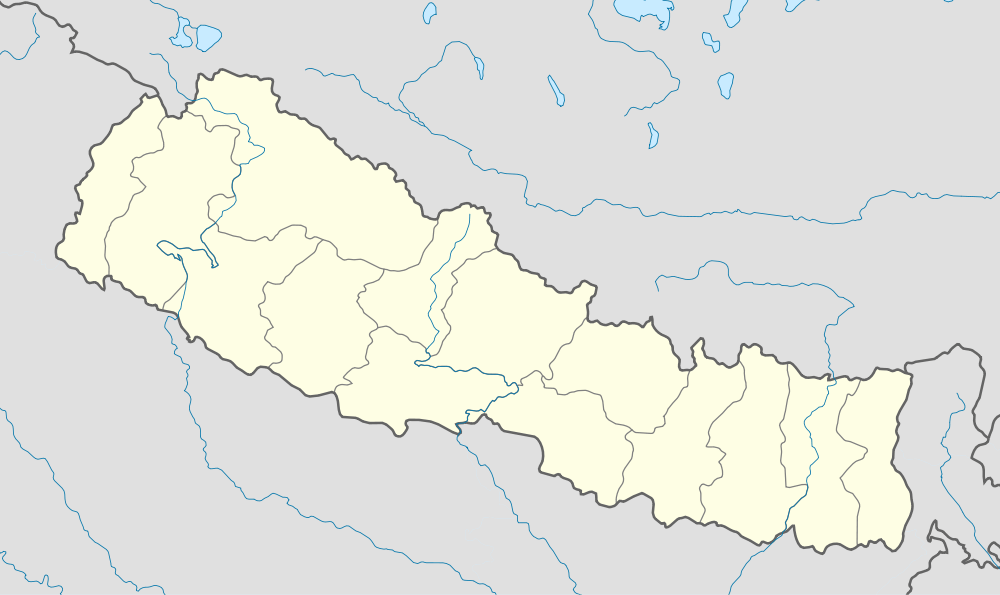Tilaurakot
| Tilaurakot तिलौराकोट | |
|---|---|
| Village development committee | |
 Tilaurakot Location in Nepal | |
| Coordinates: 27°35′N 83°05′E / 27.58°N 83.08°ECoordinates: 27°35′N 83°05′E / 27.58°N 83.08°E | |
| Country |
|
| Zone | Lumbini Zone |
| District | Kapilvastu District |
| Population (1991) | |
| • Total | 5,684 |
| Time zone | Nepal Time (UTC+5:45) |
Tilaurakot is a village development committee in Kapilvastu District in the Lumbini Zone of southern Nepal. At the time of the 1991 Nepal census it had a population of 5684 people living in 944 individual households.[1] It might have been the cardinal point of the ancient Shakyan city of Kapilavastu, where Gautama Buddha spent 29 years of his life time. It is situated west of Lumbini Grove, traditionally held to be the birthplace of Gautama Buddha.
History
The 19th-century search for the historical site of Kapilavastu followed the accounts left by Faxian and later by Xuanzang, who were Chinese Buddhist monks who made early pilgrimages to the site.[2][3][4][5] Some archaeologists have identified the Tilaurakot archeological site as the location for the historical site of Kapilavastu,[6] while others claim it was at Piprahwa in the Indian state of Uttar Pradesh.[7][8]
References
- ↑ "Nepal Census 2001". Nepal's Village Development Committees. Digital Himalaya. Retrieved 14 December 2008.
- ↑ Beal, Samuel (1884). Si-Yu-Ki: Buddhist Records of the Western World, by Hiuen Tsiang. 2 vols. Translated by Samuel Beal. London. 1884. Reprint: Delhi. Oriental Books Reprint Corporation. 1969. Volume 1
- ↑ Beal, Samuel, trans. (1911). The Life of Hiuen-Tsiang. Translated from the Chinese of Shaman (monk) Hwui Li. London. Reprint Munshiram Manoharlal, New Delhi. 1973.
- ↑ Li, Rongxi (translator) (1995). The Great Tang Dynasty Record of the Western Regions. Numata Center for Buddhist Translation and Research. Berkeley, California. ISBN 1-886439-02-8
- ↑ Watters, Thomas (1904). On Yuan Chwang's Travels in India, 629-645 A.D. Volume1. Royal Asiatic Society, London.
- ↑ Tuladhar, Swoyambhu D. (November 2002), "The Ancient City of Kapilvastu - Revisited" (PDF), Ancient Nepal (151): 1–7
- ↑ Srivastava, KM (1980). "Archaeological Excavations at Piprāhwā and Ganwaria and the Identification of Kapilavastu". The Journal of the International Association of Buddhist Studies. 13 (1): 103–10.
- ↑ "Shailvee Sharda (May 4, 2015). UP's Piprahwa is Buddha's Kapilvastu? Times of India".
